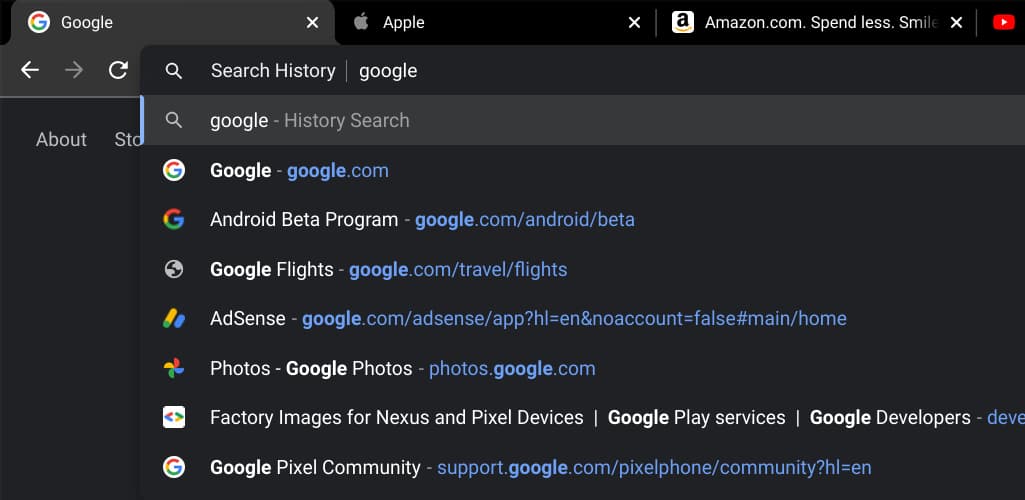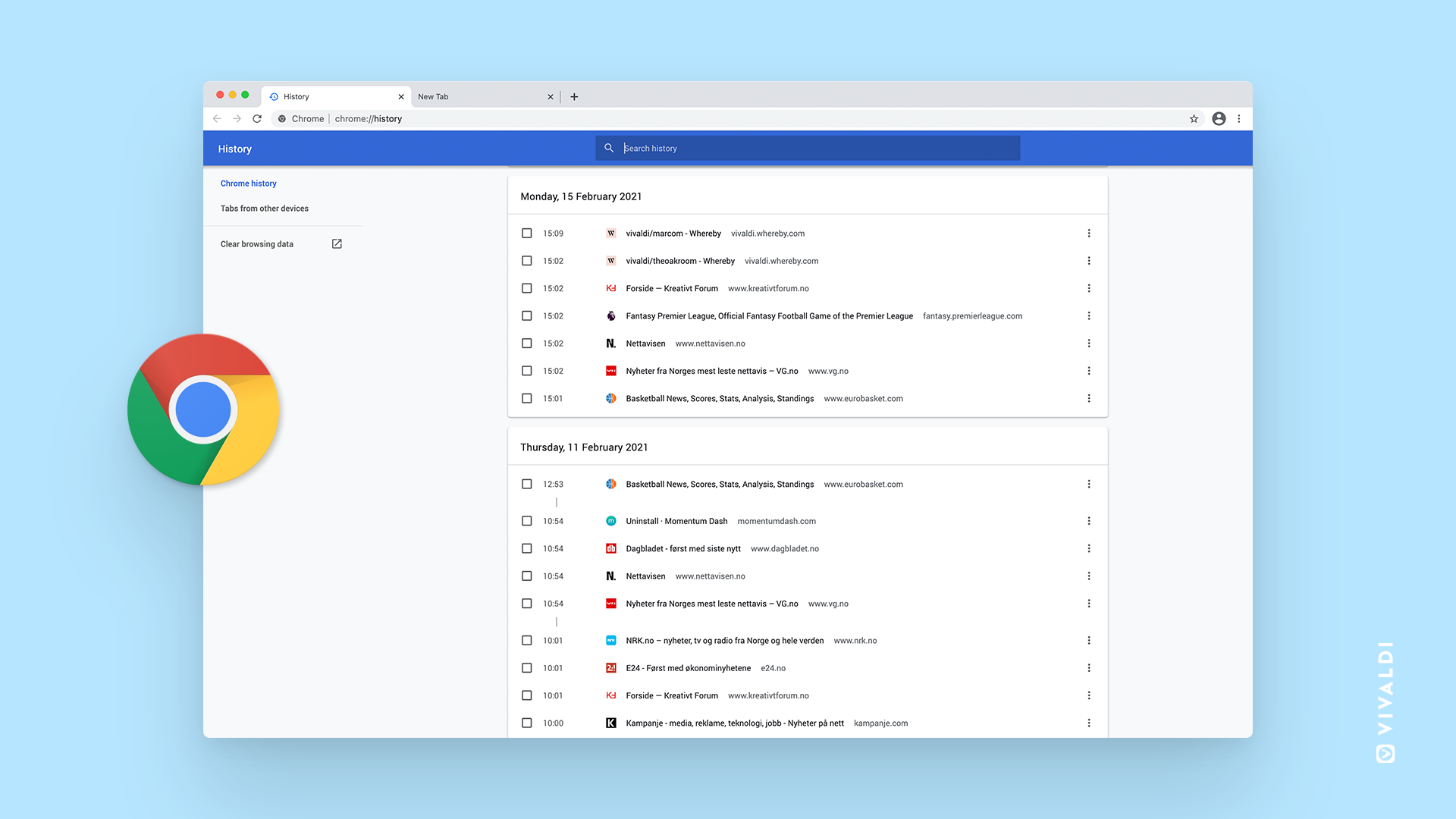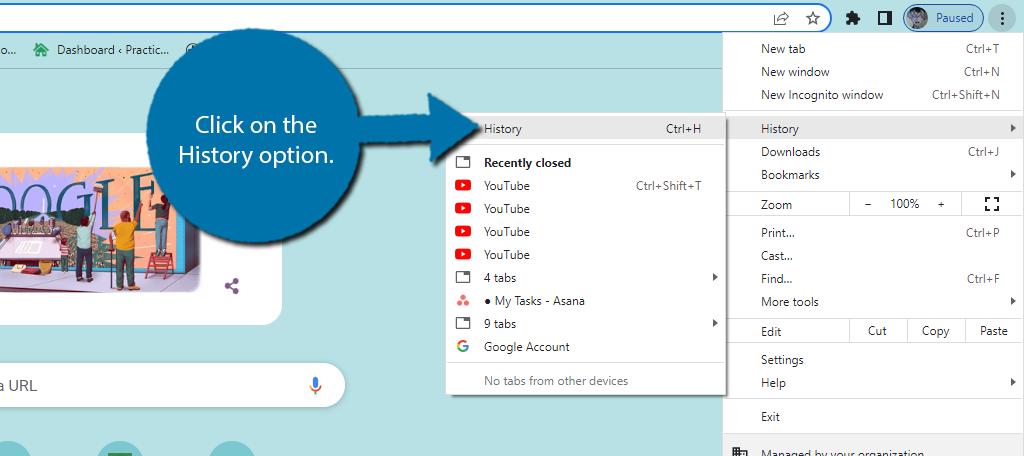Ifn hisyory chrome on a certain day – Chrome’s Journey: From Launch to Today, this article delves into the fascinating history of Google’s ubiquitous web browser, exploring its evolution from its initial development to its current position as a dominant force in the online world.
From its humble beginnings in 2008, Chrome has revolutionized web browsing, introducing innovative features and shaping the landscape of web development. This article will explore Chrome’s history, examining its key features, security advancements, and its impact on web design and user experience.
We will also analyze Chrome’s competitive landscape, its cultural impact, and its potential future trajectory.
History of Chrome
Chrome, the ubiquitous web browser, has become an integral part of our digital lives. Its journey from a nascent project to a dominant force in the browser landscape is a fascinating story of innovation, evolution, and competition.
Early Development and Release
Chrome’s development began in 2004 under the codename “Backspace” as a response to the perceived limitations of existing web browsers. Google’s mission was to create a browser that was faster, more secure, and more stable. The project was led by engineers like Sundar Pichai, who would later become Google’s CEO.
Chrome’s initial release was in September 2008, for Windows operating systems. It quickly gained popularity due to its speed, simplicity, and innovative features.
Key Features and Functionalities
Early versions of Chrome introduced several groundbreaking features that differentiated it from its competitors:
- Tabbed Browsing:Chrome popularized tabbed browsing, allowing users to open multiple web pages within a single window, enhancing productivity and navigation.
- Sandboxing:Chrome implemented sandboxing technology, isolating each tab in its own secure environment, minimizing the impact of malicious websites and enhancing security.
- JavaScript Engine (V8):Chrome introduced the V8 JavaScript engine, which significantly improved JavaScript performance, making web applications faster and more responsive.
Evolution of User Interface and Browser Engine
Chrome’s user interface and browser engine have undergone continuous evolution since its initial release. Key milestones include:
- Chrome Omnibox:The address bar and search bar were combined into a single omnibox, simplifying user interaction.
- Chrome Web Store:The Chrome Web Store was launched, offering a vast collection of extensions and apps that enhance the browser’s functionality.
- Chrome OS:Google introduced Chrome OS, a lightweight operating system built around the Chrome browser, targeting education and enterprise markets.
Chrome’s Features and Functionality
Chrome is more than just a web browser; it’s a robust platform designed for a seamless and efficient online experience. From its core functionalities to its ever-expanding feature set, Chrome aims to empower users with a range of tools and options to navigate the digital world.
Core Features
Chrome’s core features are designed to provide a smooth and user-friendly browsing experience. They form the foundation upon which advanced functionalities are built.
- Tabbed Browsing:This allows users to open multiple websites in separate tabs within the same window, enabling easy switching between them. This feature has become an industry standard, greatly improving browsing efficiency.
- Incognito Mode:This feature allows users to browse the web without leaving a history or cookies on their device. It’s useful for privacy-conscious browsing or when accessing sensitive information.
- Automatic Updates:Chrome automatically updates itself in the background, ensuring users always have the latest security patches and bug fixes, enhancing the overall browsing experience.
- Built-in PDF Viewer:Chrome’s built-in PDF viewer allows users to open and view PDF files directly within the browser without the need for additional software.
- Built-in Flash Player:While Flash is being phased out, Chrome used to have a built-in Flash Player, allowing users to access Flash content without installing separate software.
Extensions
Extensions significantly expand Chrome’s functionality, allowing users to tailor their browsing experience to their specific needs. They offer a wide range of features, from productivity tools to entertainment options.
- Early Extensions:Chrome’s early extensions were primarily focused on enhancing productivity, such as bookmarking tools, password managers, and ad blockers. These extensions laid the groundwork for the vast ecosystem of extensions available today.
- Growing Ecosystem:As Chrome’s popularity grew, so did the number and diversity of extensions. Today, extensions cover a wide range of functionalities, including social media integration, content creation tools, security enhancements, and even game emulators.
- Open Source Nature:Chrome’s open-source nature played a crucial role in the development of its extension ecosystem. Developers had the freedom to create and distribute their own extensions, leading to a rapid expansion of the available options.
Bookmarks and History Management
Bookmarks and history management are essential for organizing and retrieving online content. Chrome offers a range of features to manage these aspects efficiently.
- Bookmarking:Chrome allows users to save websites as bookmarks for easy access later. Users can organize bookmarks into folders, creating a structured system for their online resources.
- History Management:Chrome tracks the websites users have visited, providing a history log. This allows users to revisit previously viewed pages or search for specific websites they’ve visited.
- Synchronization:Chrome allows users to synchronize their bookmarks and history across multiple devices, ensuring access to their saved data regardless of the device they are using.
Open Source Development
Chrome’s open-source nature has had a profound impact on its development and feature set. It has fostered a collaborative environment, enabling developers worldwide to contribute to the browser’s evolution.
- Community Collaboration:The open-source model allows developers to contribute to Chrome’s codebase, identify and fix bugs, and suggest new features. This collaborative approach has resulted in a robust and continuously improving browser.
- Faster Development Cycle:The open-source community’s contributions have significantly accelerated Chrome’s development cycle. Bug fixes and new features are implemented more quickly, leading to a more responsive and up-to-date browser.
- Transparency and Accountability:The open-source nature of Chrome ensures transparency in its development process. Anyone can access and review the source code, fostering accountability and trust in the browser’s security and reliability.
Chrome’s User Experience

Chrome’s user experience is a cornerstone of its success, striving to provide a seamless and intuitive browsing experience across various platforms. This section delves into the factors that contribute to Chrome’s user experience, exploring its design principles, platform variations, and overall pros and cons.
Chrome’s User Experience Across Platforms
Chrome’s user experience is designed to be consistent across various platforms, including desktop, mobile, and Chromebook. This consistency allows users to transition seamlessly between devices without needing to learn a new interface.
| Platform | User Interface | Key Features |
|---|---|---|
| Desktop | Clean and minimalist, with a focus on functionality. | Tab management, extensions, bookmarks, history, settings, etc. |
| Mobile | Optimized for touchscreens, with larger buttons and simplified navigation. | Data saving mode, incognito browsing, voice search, etc. |
| Chromebook | Integrated with the operating system, providing a streamlined experience. | Offline access to apps, file syncing, cross-device compatibility, etc. |
Design Principles Guiding Chrome’s User Interface
Chrome’s user interface is guided by several design principles that have evolved over time.
- Simplicity and Minimalism:Chrome’s interface prioritizes functionality over aesthetics, presenting a clean and uncluttered layout that minimizes distractions.
- Consistency and Familiarity:Across different platforms, Chrome maintains a consistent design language, making it easy for users to navigate and interact with the browser regardless of their device.
- User-Centric Design:Chrome’s interface is designed with the user in mind, focusing on ease of use and accessibility. Features like tab management, bookmarking, and extensions are readily available and intuitive.
- Adaptability and Evolution:Chrome’s interface is constantly evolving to meet the changing needs of users and technological advancements. New features are introduced, and existing ones are refined to enhance the browsing experience.
Pros and Cons of Chrome’s User Experience
While Chrome’s user experience is generally considered positive, it has its strengths and weaknesses.
| Pros | Cons |
|---|---|
| Fast and efficient performance. | Can be resource-intensive, potentially impacting system performance. |
| Extensive customization options through extensions. | May require more effort to configure for specific needs. |
| Seamless integration across multiple platforms. | Limited offline functionality compared to some competitors. |
| Strong security and privacy features. | Data collection practices have raised privacy concerns for some users. |
Chrome’s Competition

The web browser landscape is a competitive one, with several players vying for user attention. Chrome, while dominating the market, faces competition from other popular browsers like Firefox, Safari, and Edge. Each browser brings its own unique strengths and weaknesses to the table, catering to different user preferences and needs.
Market Share Comparison
Analyzing the market share of these browsers over time reveals interesting trends. According to StatCounter GlobalStats, Chrome consistently holds the largest market share, hovering around 65% in recent years. Firefox, the second most popular browser, has a market share of around 15%.
Safari, primarily used on Apple devices, has a market share of around 10%. Edge, Microsoft’s latest browser, has gained traction, reaching a market share of around 4%. These figures highlight Chrome’s dominance and the steady growth of Edge.
Strengths and Weaknesses of Chrome’s Competitors, Ifn hisyory chrome on a certain day
- Firefox: Known for its strong privacy features, Firefox offers a robust suite of privacy-enhancing tools, including tracking protection and anti-fingerprinting measures. It also prioritizes user customization, allowing users to personalize their browsing experience with extensions and themes. However, Firefox has been criticized for its performance, which can be slower than Chrome on some tasks.
- Safari: Optimized for Apple devices, Safari boasts a seamless integration with the Apple ecosystem. Its strong security features and focus on user privacy are also notable. However, Safari’s limited availability on non-Apple devices restricts its user base.
- Edge: Edge has evolved significantly since its initial release, offering a modern interface and improved performance. It integrates well with Windows and offers features like reading view and voice control. However, Edge still lags behind Chrome in terms of extensions and overall functionality.
Factors Contributing to Chrome’s Popularity
- Performance: Chrome is known for its speed and responsiveness, thanks to its efficient architecture and optimized rendering engine.
- Extensive Ecosystem: Chrome’s vast library of extensions and apps provides users with a wide range of customization options and tools.
- Cross-Platform Availability: Chrome is available on all major operating systems, making it accessible to a broad user base.
- Synchronization: Chrome’s synchronization features allow users to seamlessly access their browsing data, bookmarks, and settings across multiple devices.
- Google Integration: Chrome integrates seamlessly with other Google services, such as Gmail, Google Drive, and Google Maps, offering a convenient user experience.
Chrome’s Future

Chrome, the dominant web browser, is constantly evolving, adapting to the ever-changing landscape of the internet. Its future holds exciting possibilities, driven by technological advancements and the ever-increasing demands of users.
Emerging Technologies and Chrome’s Future
The integration of emerging technologies like artificial intelligence (AI) and virtual reality (VR) is shaping Chrome’s future. AI is being leveraged to enhance user experience through features like personalized recommendations, intelligent search suggestions, and automated tasks. VR, on the other hand, is opening up new avenues for immersive web experiences, blurring the lines between the physical and digital worlds.
“The future of the web is about making the internet more accessible and engaging, and AI and VR are key to achieving this.”
[Insert Name of Expert], [Insert Position]
- AI-Powered Personalization:Chrome is integrating AI to personalize user experiences, offering tailored search results, content recommendations, and even automated tasks like scheduling appointments or managing emails. Examples include Google’s Smart Compose feature, which predicts and suggests text as you type, and Google Assistant, which provides voice-based search and task management.
- Immersive Web Experiences with VR:VR is transforming how we interact with the web, offering immersive experiences like virtual tours, interactive games, and 3D shopping. Chrome is adapting to support VR content, allowing users to explore virtual worlds and engage with web applications in a whole new way.
An example is Google Earth VR, which lets users explore the globe from the comfort of their homes.
Chrome’s Role in Web History

Chrome’s arrival in 2008 marked a pivotal moment in the evolution of web browsing. Developed by Google, it challenged the established order and redefined how users interacted with the internet.
Chrome’s Impact on Web Browsing
Chrome’s impact on web browsing is undeniable. Its influence can be seen in various aspects, from its speed and performance to its influence on web standards and the adoption of new technologies.
Speed and Performance
Chrome’s focus on speed and performance was a game-changer. Its use of the V8 JavaScript engine, which was built from scratch, significantly improved the execution of web pages, making them load faster and run more smoothly. This emphasis on performance set a new standard for web browsers, prompting other browsers to follow suit.
Web Standards and Technologies
Chrome’s commitment to web standards and its adoption of new technologies like HTML5 and WebGL helped push the web forward. It embraced open web technologies, contributing to the development of these standards and encouraging their widespread adoption. This contributed to a more robust and feature-rich web experience.
User Interface and Design
Chrome’s minimalist and user-friendly interface became a blueprint for future browser designs. Its tabbed browsing, bookmarking features, and intuitive navigation made it accessible and easy to use. Its clean design and focus on functionality resonated with users, influencing the user interface of other browsers.
Key Events in Chrome’s Journey
Chrome’s journey has been shaped by several key events and developments that have solidified its position as a dominant force in web browsing.
Release of Chrome (2008)
The release of Chrome in 2008 marked a significant turning point in the web browser landscape. Its speed, performance, and user-friendly interface quickly gained popularity, challenging the dominance of Internet Explorer.
Chrome OS (2011)
The launch of Chrome OS, a cloud-based operating system designed to work seamlessly with Chrome, further solidified Google’s commitment to web-based technologies. It offered a lightweight and secure operating system experience, primarily relying on web applications.
Chrome DevTools (2008)
Chrome DevTools, a set of developer tools built into Chrome, provided web developers with powerful tools for debugging, inspecting, and optimizing web pages. These tools empowered developers to create more efficient and user-friendly web experiences, contributing to the overall advancement of the web.
Mobile Chrome (2008)
The launch of Chrome for mobile devices extended its reach to a wider audience. Its cross-platform availability and seamless integration with Google services made it a popular choice for mobile browsing.
Chrome’s Market Share
Chrome’s rapid rise in popularity led to a significant increase in its market share. It became the most popular web browser globally, surpassing Internet Explorer and other established browsers. Its dominance in the market further reinforced its influence on web browsing and the development of web technologies.
Chrome’s Impact on Web Design: Ifn Hisyory Chrome On A Certain Day

Chrome’s rise to dominance in the browser market has had a profound impact on the evolution of web design principles and practices. The browser’s rendering engine, Blink, has shaped how web pages are displayed, while its performance optimizations have influenced design trends and the development of web design tools.
Chrome’s Rendering Engine and Web Design Principles
Chrome’s rendering engine, Blink, has played a pivotal role in shaping web design principles. Its emphasis on efficient rendering and smooth performance has led to the adoption of best practices that prioritize speed and responsiveness. For example, Blink’s efficient handling of CSS animations and transitions has encouraged web designers to incorporate more dynamic and engaging visual elements.
The engine’s support for modern web technologies, such as Web Components and the Service Worker API, has also paved the way for more modular and interactive web experiences.
Chrome’s Influence on Web Design Tools and Frameworks
The widespread adoption of Chrome has driven the development of web design tools and frameworks that are optimized for its rendering engine. Frameworks like React, Angular, and Vue.js have emerged to streamline web development and leverage Chrome’s capabilities. These frameworks often employ virtual DOM techniques that enable efficient rendering and updates, contributing to a smoother user experience.
While researching the fascinating history of chrome on a particular day, I stumbled upon a curious connection to the automotive world. Apparently, the 2009 Hyundai Genesis 4.6 fuse box diagram holds the key to understanding the intricate workings of chrome’s historical development.
Who knew the automotive industry could shed light on such a seemingly unrelated topic? It just goes to show, you never know where your next rabbit hole will lead you in the vast realm of historical research.
Furthermore, the development of browser-based design tools, such as Figma and Webflow, has been influenced by Chrome’s performance and features, making it easier for designers to create web experiences that are optimized for the browser.
Chrome’s Performance Optimizations and Web Design Trends
Chrome’s commitment to performance optimization has significantly impacted web design trends. The browser’s focus on reducing page load times and improving responsiveness has led to a shift towards lightweight design principles. Web designers now prioritize efficient image optimization, code minification, and the use of lazy loading techniques to ensure faster page loads.
Moreover, Chrome’s support for progressive web apps (PWAs) has spurred the development of web experiences that are more app-like in their functionality and performance, blurring the lines between traditional websites and native mobile apps.
Chrome’s Use Cases
Chrome, the ubiquitous web browser, transcends the realm of mere internet access, serving as a versatile tool across diverse applications, from personal browsing to specialized professional tasks. Its adaptability stems from a robust feature set, seamless integration with other Google services, and a commitment to user experience.
Personal Use
Chrome’s user-friendly interface and vast library of extensions cater to the needs of everyday internet users.
- Web Browsing:Chrome’s core functionality lies in its ability to access and display web pages efficiently, with features like tabbed browsing, bookmarking, and history management enhancing the browsing experience.
- Email and Communication:Integration with Gmail, Google Meet, and other Google services makes Chrome a central hub for communication and collaboration.
- Entertainment and Media Consumption:Chrome supports streaming services like YouTube, Netflix, and Spotify, offering a seamless experience for entertainment and media consumption.
- Shopping and Online Transactions:Chrome’s secure browsing features and integration with online payment systems make it a trusted platform for online shopping and financial transactions.
- Social Media and Networking:Chrome provides access to popular social media platforms, facilitating communication and interaction with friends and family.
Professional Use
Chrome’s versatility extends beyond personal use, finding applications in various professional settings.
- Web Development and Design:Chrome’s developer tools, including the Inspector and Console, provide developers with the necessary tools to debug, test, and optimize websites.
- Remote Work and Collaboration:Chrome’s integration with Google Workspace apps like Docs, Sheets, and Slides enables remote collaboration and productivity.
- Business Communication and Management:Chrome’s integration with Google Meet and other communication tools facilitates business meetings, presentations, and collaboration.
- Research and Information Gathering:Chrome’s search functionality, bookmarking, and note-taking capabilities make it a valuable tool for research and information gathering.
- E-commerce and Online Sales:Chrome’s secure browsing features and integration with online payment systems make it a trusted platform for e-commerce transactions.
Specialized Applications
Chrome’s versatility extends to specialized applications, where its unique features and functionalities prove valuable.
- Education:Chromebooks, powered by the Chrome operating system, have become popular in educational settings due to their affordability, ease of use, and cloud-based functionalities.
- Healthcare:Chrome’s secure browsing features and integration with healthcare applications make it a valuable tool for patient data management and telemedicine.
- Finance:Chrome’s secure browsing features and integration with online banking and investment platforms make it a trusted platform for financial transactions.
- Gaming:Chrome’s support for HTML5 and WebGL enables the development and play of web-based games.
- Scientific Research:Chrome’s support for scientific applications and data visualization tools makes it a valuable tool for researchers.
Chrome’s Cultural Impact
Chrome’s influence extends far beyond its technical capabilities, deeply impacting how we interact with the web and shaping internet culture as we know it. Its sleek design, speed, and focus on user experience have transformed how we access information and engage with online content.
Chrome’s Influence on Web Design
Chrome’s rise coincided with a significant shift in web design. The browser’s emphasis on clean interfaces, responsiveness, and performance set a new standard for web development. Websites began prioritizing a user-friendly experience, adopting minimalist designs, and prioritizing speed. Chrome’s influence can be seen in the widespread adoption of frameworks like Bootstrap and Material Design, which prioritize clean layouts and responsive design principles.
This shift towards user-centric web design has made the internet more accessible and engaging for a broader audience.
Detailed FAQs
What are some of the most significant challenges that Chrome faces in the future?
Chrome faces challenges such as maintaining its market dominance in a competitive browser landscape, addressing user privacy concerns, and adapting to the evolving web landscape, including the rise of new technologies like artificial intelligence and virtual reality.
What are some of the unique features and functionalities that make Chrome suitable for specific use cases?
Chrome offers features like extensions, synchronization across devices, built-in security features, and accessibility options, making it suitable for various use cases, including personal browsing, professional work, and specialized applications.